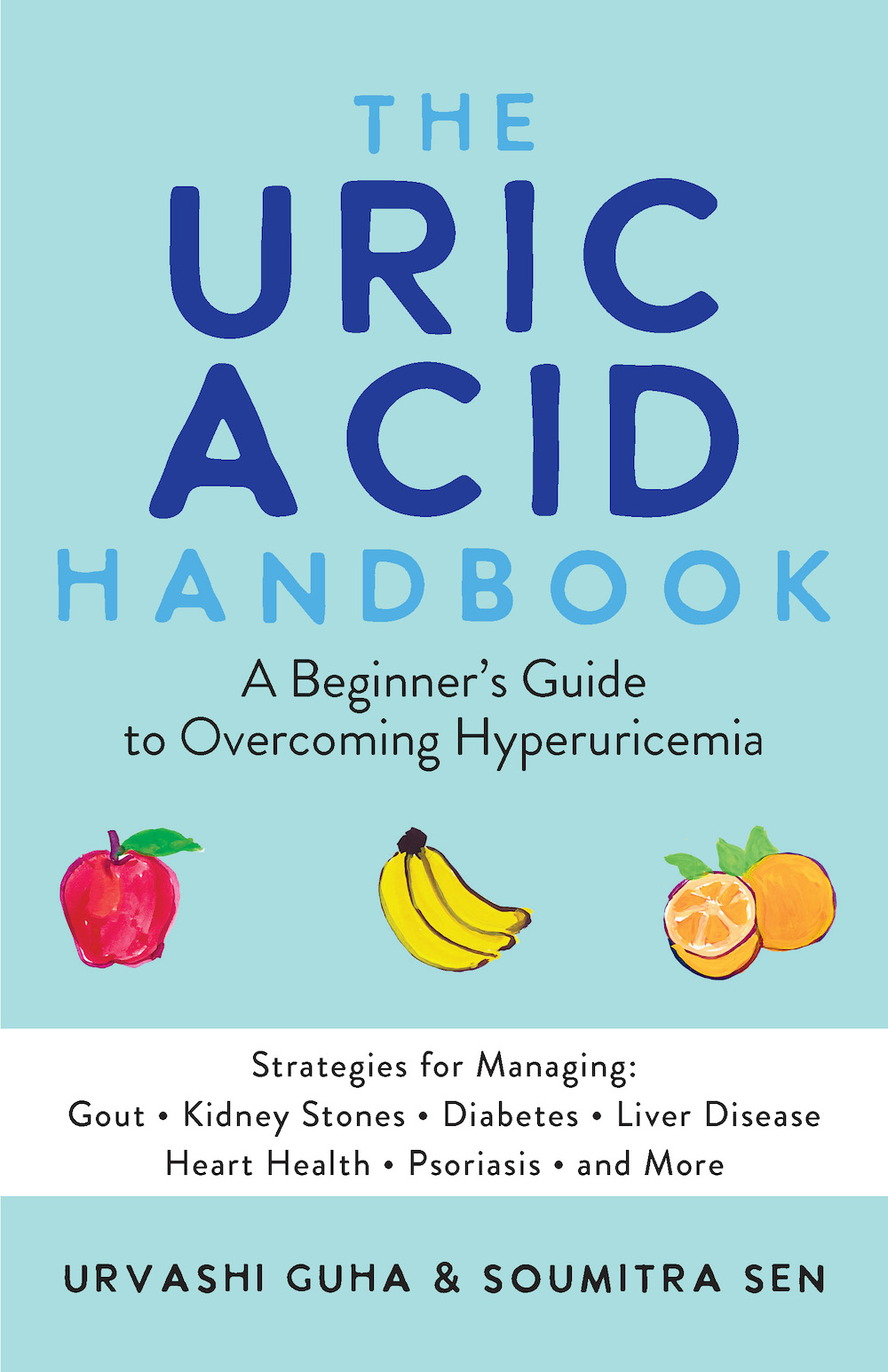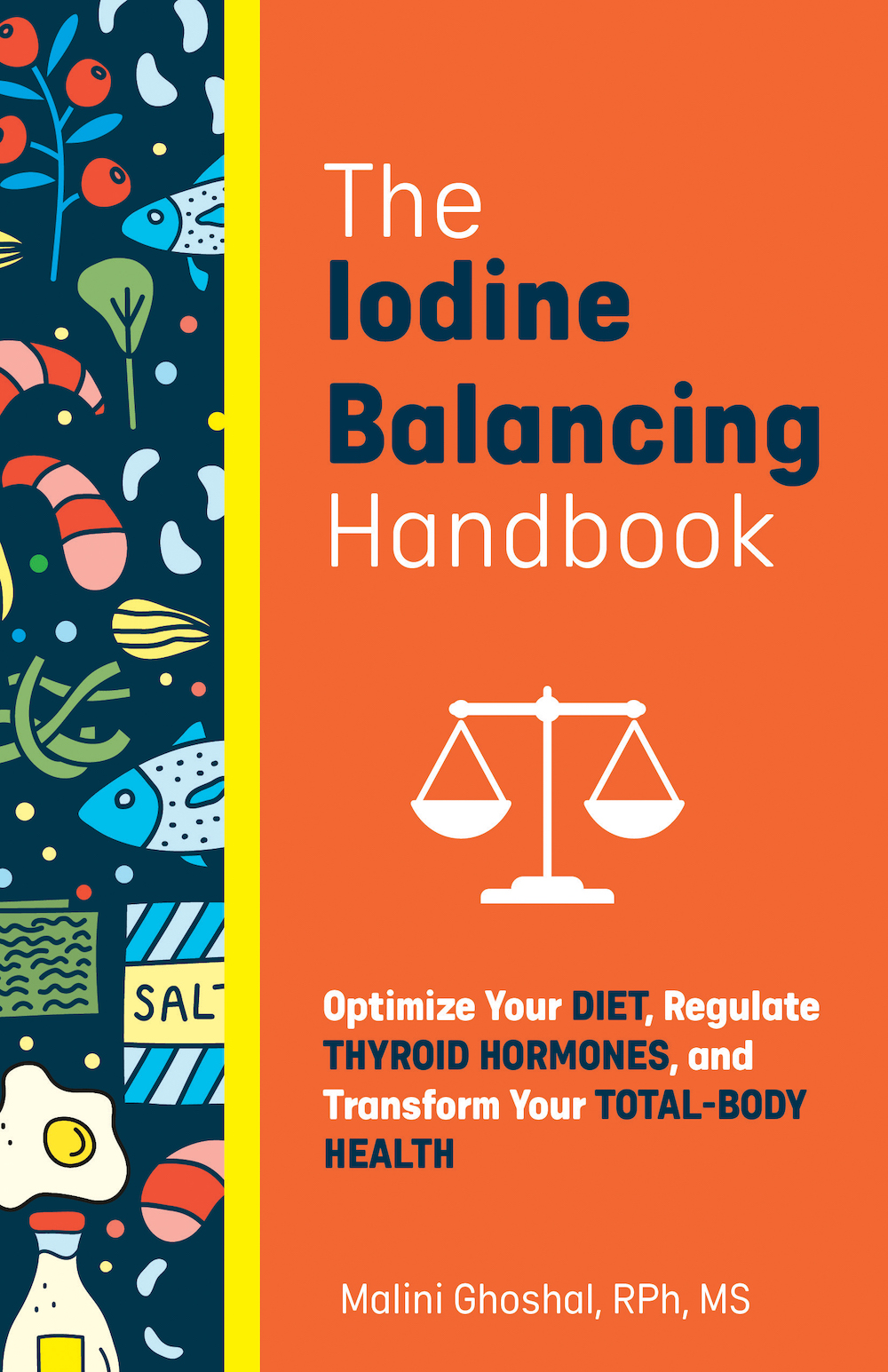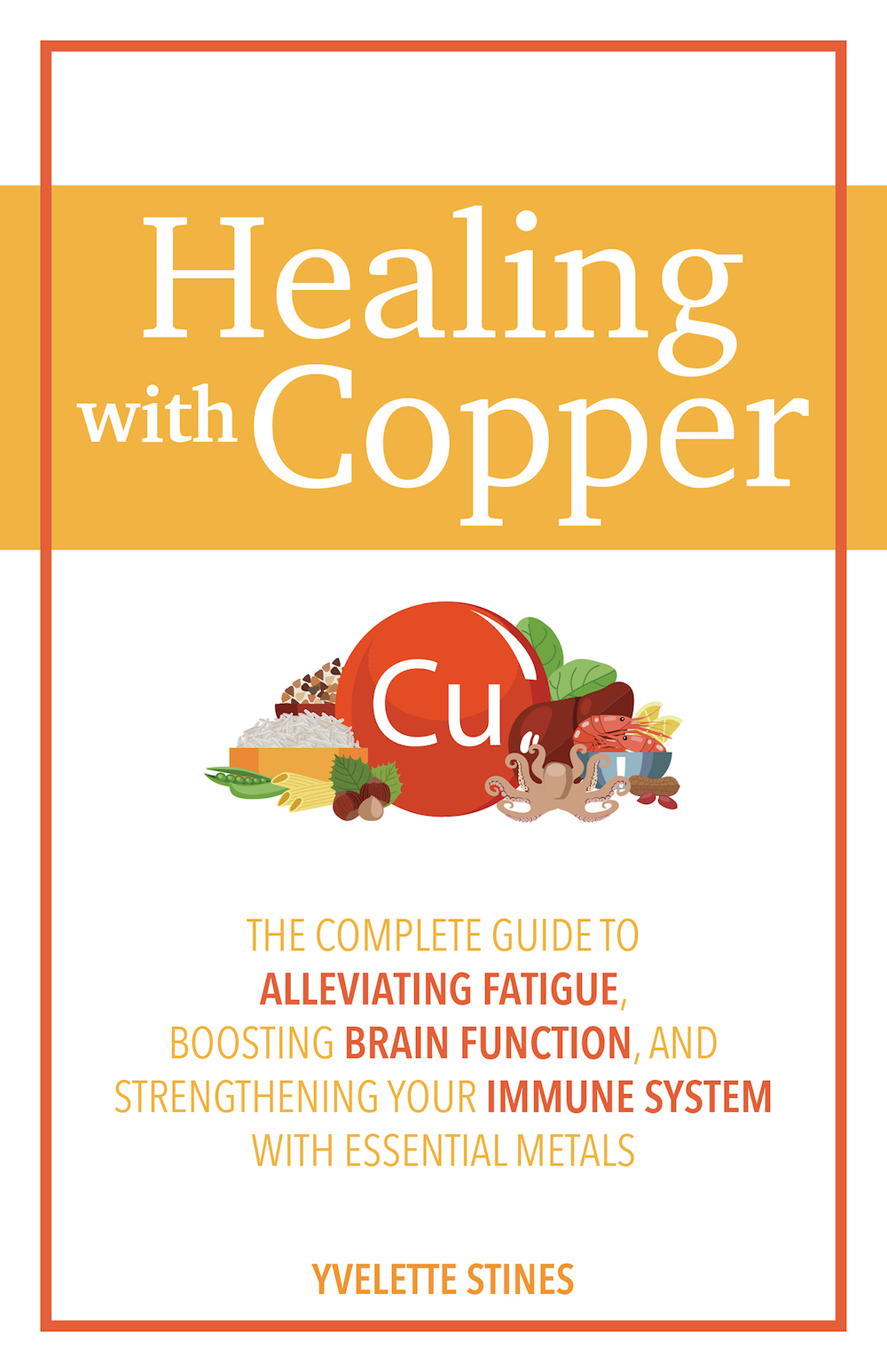
Hyperuricemia: A Primer from The Uric Acid Handbook
- Book Sample /
- Health
 Millions of Americans experience high uric acid levels, aka hyperuricemia, and as a result suffer from health conditions like gout, liver disease, kidney stones, heart disease and more. Uric acid is a waste product found in the blood. The body naturally dissolves uric acid, but sometimes it can build up in the body and cause major health problems. With The Uric Acid Handbook, you will first learn what uric acid is and how it operates within your body. Then this book will walk you through how you may be unknowingly increasing your uric acid levels and the certain health risks associated with doing so. Using relatable anecdotes and research-backed strategies, this friendly guide will give you all the tools you need to lower your uric acid levels.
Millions of Americans experience high uric acid levels, aka hyperuricemia, and as a result suffer from health conditions like gout, liver disease, kidney stones, heart disease and more. Uric acid is a waste product found in the blood. The body naturally dissolves uric acid, but sometimes it can build up in the body and cause major health problems. With The Uric Acid Handbook, you will first learn what uric acid is and how it operates within your body. Then this book will walk you through how you may be unknowingly increasing your uric acid levels and the certain health risks associated with doing so. Using relatable anecdotes and research-backed strategies, this friendly guide will give you all the tools you need to lower your uric acid levels.
Ready to learn more? Check out the excerpt below on hyperuricemia treatment.
* * *
By now you have a better understanding of how elevated uric acid causes not only gout but also a host of other medical issues. Consider this for a moment. Nearly half of adults in the United States (47 percent, or 116 million) have hypertension, defined as a systolic blood pressure greater than 130 millimeters of mercury (mmHg) or diastolic blood pressure greater than 80 mmHg, or are taking medication for hypertension. Knowing all this leads us to an important question: Why are rates of high blood pressure (hypertension) going up, even in adolescents and in people who maintain their ideal weight (a staggering one in three adults has hypertension and one in ten youths between the ages of twelve and nineteen has elevated blood pressure)?
Most probably, this epidemic is due to elevated uric acid in the body. According to Peter Grayson MD, a rheumatologist at the Boston Medical Center and lead investigator in a study, most of the studies his team reviewed accounted for factors that are traditionally known to increase the likelihood of developing high blood pressure—such as age, family history, weight, and tobacco use. By doing this, Dr. Grayson and his team were able to determine if uric acid independently increases the risk for hypertension. Among the 18 studies analyzed, there was data from 55,607 participants, including 13,025 participants with high blood pressure. The researchers noted that participants with hyperuricemia were more than 40 percent more likely to later develop high blood pressure than participants without hyperuricemia. Women with the highest uric acid levels and people who develop high levels of uric acid at a relatively young age are especially at risk for developing high blood pressure.
Hyperuricemia
The good news is that hyperuricemia can be managed, stopped, and controlled with adequate recognition to asymptomatic hyperuricemia, or elevated uric acid in the body that doesn’t exhibit any symptoms. All of us need to add “check uric acid levels” to our health checkup lists. This is because if we let hyperuricemia persist untreated, then its resulting health issues can be severe. The good news is even if we do find out that we have hyperuricemia, it shouldn’t be any cause for worry, as it can be fully treated by medication and sustained lifestyle changes.
Hyperuricemia and Gout
It’s now well-known and accepted that the major symptom of hyperuricemia is gout. When uric acid levels are elevated, urate crystals may form stone-like deposits in joints, soft tissues, bones, and skin, and trigger gout flares with episodes of severe pain.
It is important to note that gout is often described as a common and complex form of arthritis with a sudden attack of pain, swelling, redness, and tenderness in the affected location. Without clinical intervention, these urate crystals can become increasingly problematic within affected joints or tissues, and progressively damage them.
The traditional treatment with uric acid-lowering drugs for gout flares has been well-established for the improvement of quality of life, although it may not be optimal for all patients. Clinicians also employ anti-inflammatory therapy to reduce deposition of urate crystals in the joints. Allopurinol remains the first-line drug for reducing uric acid levels to normal. It is prescribed most often together with colchicine or nonsteroidal anti-inflammatory drugs for enhancement of efficacy.
Drugs like allopurinol and non-steroidal anti-inflammatory drugs (NSAIDs) may not rapidly eliminate local inflammation due to a gout flare. It takes patience and diligence because a full recovery from a gout flare takes time (this varies from patient to patient). This may make a person feel unsure about the regimen that they are following. Here we provide you with a list of drugs used to treat gout:
An increase in uric acid concentration that exceeds the normal range might not be exclusively linked to gout flares, as many factors causing hyperuricemia are not relevant or significant to gout formation. Certain foods or medicines could induce hyperuricemia. Under renal dysfunction or cell damage, UA could suddenly increase by changing renal function to cause hyperuricemia. Drugs such as diuretics, anticonvulsants (valproate and phenobarbital), cyclosporine, theophylline, favipiravir (an antiviral drug), and pyrazinamide have been reported to increase uric acid levels.
Emotional stress, fasting, or dehydration caused by physical activity can also increase the concentration of UA. Although occasionally, an acute gout flare may be linked with the above-mentioned medication(s) or condition(s), enhanced uric acid levels are generally speaking a temporary phenomenon, and a gout flare is considered unlikely to occur if a longer duration and higher dose treatment are avoided. Controversially, pseudo-gout (a form of arthritis characterized by sudden, painful swelling in one or more of the joints, which can last for days or week), which is caused by calcium pyrophosphate deposition (CPPD), could have the same inflammatory symptoms as gout without hyperuricemia.
Natural Treatment for Gout Flares
There are products available that are completely made of natural products, like berries, that help when there is a gout flare.
Complete is one such organic and kosher product that cleanses uric acid from joints naturally. It is a liquid remedy that combines ingredients that are beneficial in helping support kidney function, circulation and the management of uric acid levels.
Such products generally include organic ingredients like water, apple cider vinegar, tart cherry, beet root, lemon, black carrot, peppermint, lime, cinnamon, rosemary, chanca piedra, citric acid, grape, purple corn, red cabbage.
Homeopath
Homeopathy, also known as homeopathic medicine, is a medical system that was developed in Germany more than 200 years ago. It’s based on two unconventional theories:
“Like cures like”—the notion that a disease can be cured by a substance that produces similar symptoms in healthy people.
“Law of minimum dose”—the notion that the lower the dose of the medication, the greater its effectiveness. Many homeopathic products are so diluted that no molecules of the original substance remain.
Homeopathic products come from plants (such as red onion, arnica [mountain herb], poison ivy, belladonna [deadly nightshade], and stinging nettle), minerals (such as white arsenic), or animals (such as crushed whole bees). Treatments are “individualized” or tailored to each person—it’s common for different people with the same condition to receive different treatments. Homeopathy uses a different diagnostic system for assigning treatments to individuals and recognizes clinical patterns of signs and symptoms that are different from those of conventional medicine.
Homeopathy treats the root cause of the problem and aims to eradicate the health issue completely. In homeopathy, it is not about controlling the levels of uric acid, but rather ensuring that the levels in the body never go above the recommended range. This means that once you begin therapy for managing your uric acid levels, the homeopathic practitioner works toward getting the levels back to normal and ensures that they stay that way. In homeopathy, increased levels of uric acid is considered a symptom and not a disease, unlike allopathy, which considers hyperuricemia as the main health issue or disease. A homeopath often does a deep investigation to find the reason for elevated uric acid levels in the body.
Homeopathy is known to control uric acid and is also useful in acute attacks. The following drugs can be an essential aid in the treatment of gout if you are keen to follow homeopathic treatment to handle hyperuricemia.
LYCOPODIUM—This drug is used when a patient has:
- chronic gout with chalky deposits in the joints
- mental keenness but shows weak muscular power
- an emaciated (thin and withered) body and tends to have gas
- the feeling of apprehension and fear of being alone
- a lack self-confidence, but a haughty and headstrong temperament when sick
- pain in the heels, as if treading on a pebble
- a hot feeling in one foot but a cold feeling in the other
- urine that is is slow in coming and shows heavy red sediment
- a backache that is relieved by urination
- a right side of the body that is peculiarly affected
- complaints that seem to increase in the evening, especially between 4 p.m. and 8 p.m.
COLCHICUM—This drug has a specific power to relieve a sudden attack of gout but is more beneficial in cases of chronic impact. This medicine is used when the effected parts are:
- red, hot, and swollen with tearing pains felt more in the night
- sensitive to touch
- tearing pains in the joints in hot weather and stinging during cold
- gout that has settled in the great toe or in the heel
- disorders of the stomach accompanying gout
- nausea and even fainting at the smell of food, particularly fish
- an icy coldness felt in the stomach
- urine that is dark, brown, or black, like ink
URTICA URENS—This drug, prepared from the stinging nettle, helps eliminate uric acid from the body. This is used when the patient:
- tends to have gout and stone formations
- has joint symptoms that are associated with urticaria or alternate with it
- has the shoulders (deltoid region), wrists, and ankles affected
- cannot tolerate touch, water, or exposure of the affected parts to cool, moist air and snow air.
LITHIUM CARBONICUM—This drug is used when:
- there is swelling and tenderness of the finger and toe joints, which feels better with hot water
- there is a nodular swelling of the joints
- there is ankle pain on walking
- there are headaches, acidity, nausea, and gnawing pain in the stomach which ceases while eating
- the urine may deposit red sand and is turbid, scanty, and dark
- there are joint symptoms associated with a heart disease
LEDUM—this drug is used when:
- gout is the result of alcoholism
- the inflammation of the joints begins in the lower limbs and ascends upward
- the ball of the great toe is swollen and sometimes red or bluish, and cold to the touch
- dipping the part in a bucket of ice-cold water relieves the pain
- it is generally worse from getting warm in bed
- the patient is sensitive to the cold, yet the heat of the bed is intolerable
BENZOIC ACID—this drug is used when:
- there are symptoms of gout associated with highly colored and offensive urine
- the pains are tearing in the affected joint
- gout seems to settle in the Achilles tendon, just above the heel
- the symptoms worsen in the open air and from uncovering the affected parts
A detailed history followed by constitutional treatment by a qualified homeopathic specialist is necessary to treat gout. It is not advisable to resort to self-medication for any disease. The above-mentioned drugs are just a few of the remedies for gout and are mentioned solely to create awareness about the efficacy of homeopathy in this disease.
* * *
To learn more and explore your own uric acid levels, check out The Uric Acid Handbook, available now.
The Uric Acid Handbook
Take control of your health with this easy-to-use guide to lowering uric acid levels and managing gout, liver disease, heart health, and more! Millions of Americans experience high uric acid levels, aka hyperuricemia, and as a result suffer from health conditions like gout, liver disease, kidney stones, heart disease and more. Uric acid is
Learn more









